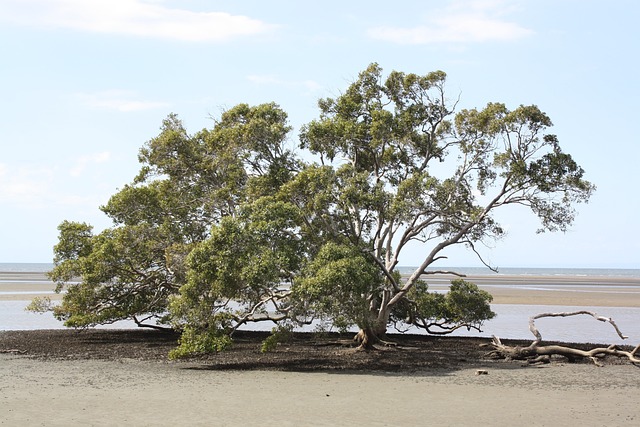Allyson Pimentel. mindfulness teacher with the Mindful Awareness Research Center (MARC), UCLA, offers a guided meditation podcast titled, Mindfulness as Letting Go and Letting Be. She describes the meditation as a Compassionate Body Scan and notes that it’s an adaption from a book by Susan Pollak, Thomas Pedulla and Ronald D. Siegel, Sitting Together: Essential Skills for Mindfulness-Based Psychotherapy. While the Compassionate Body Scan is one of the many meditations offered for therapists working with clients, it has wider application for every-day use by non-therapists. To this end, the authors offer a series of audio meditation podcasts for personal use in downloadable format, along with handouts that list the steps in each mindfulness practice..
The Letting Go meditation offered by Allyson at the end of the 2022 is very timely as it coincides with a time when we have a natural tendency to review our year and begin to make resolutions about changes we want to make in our life. This could mean breaking free of the ties that bind us, e.g., shame, expectations, perfectionism, or fear of failure. It might entail overcoming self-protection or false beliefs that are preventing us from undertaking needed personal change. Alternatively, it could involve letting go of difficult emotions, such as anger, hatred and resentment.
Allyson reminds us that mindfulness involves paying attention to the present moment as it is – not as we wish it to be. In this sense, it requires us to let go of “fantasy” and get in touch with our reality as it is, not distorted by wishful thinking. Her guided meditation involves adopting an attitude of compassion towards ourselves as we scan our bodies and get in touch with the here-and-now bodily sensations we are experiencing. Unlike some other forms of body scan, the focus of the compassionate body scan is not on release of tension but softening the sensation – staying with the discomfort and noticing how it changes over time as you soften its intensity. Allyson points out that the process “can begin to soften the hardened, contracted aspects of our life, our bodies, our minds”.
Guided meditation
At the outset. Allyson explains that letting go within the meditation is not an active process such as throwing out unwanted materials but a passive process of “letting be” – noticing and accepting what is. The goal is to develop “clear insight” into our current reality as reflected in our bodily sensations. Freedom lies in relating to ‘what is” with kindness and self-compassion, however painful. She quotes an insightful poem by a friend that acknowledges “the pain of letting go what defines yourself”.
During the guided meditation, Allyson helps us to focus on various body parts, starting with our forehead and extending to our feet, all the time bringing compassion to ourselves. This is a particular form of meditation that is better with a guide as it helps us to focus on our bodily sensations and supports us to soften our sensations rather than adopt the habituated behaviour of attempting to remove or release them. The meditation component of the podcast is about 20 minutes.
Reflection
During the guided meditation, I became conscious of my efforts at letting go when playing social tennis. After having played team tennis competitions for two decades, I had developed an ingrained “need to win”. I have had to progressively curb my need to win each point, each game, my own service game and eventually each set. Underpinning this letting go is the need to let go of the image of myself as a very fit 40 year old playing A-Grade tennis. The reality is that I am 76 years of age and losing strength in my arms, wrists and legs – my current reality, not my “fantasy’. The last milestone in letting go of my “need-to-win” mindset, is being able to genuinely “savour the wins of others” – the winning shots of my opponents.
At the outset of the guided meditation, Allyson encourages us to take in our environment. Fortuitously, I had decided to undertake the guided meditation while seated on our back deck – not in my office as I usually do. The environment I was able to take in was very calming and pleasant – the warm sun of a Summer’s afternoon, glimpses of Moreton Bay and the islands, a very blue cloudless sky, a gentle cooling breeze and the sounds of Rainbow Lorikeets returning to their nightly resting place.
Gabor Maté, leading trauma expert, reminds us in his latest book, The Myth of Normal, that healing “starts with waking up…to what our bodies are expressing and our minds are suppressing”. Edith Eger, holocaust survivor and world-renowned psychologist, suggests that what we need to do is to “remove the concentration camp of our mind” – thus choosing freedom over victimhood.
As we grow in mindfulness through reflection and guided meditations, we grow in self-awareness – awareness of our bodies, our mindset, the thoughts and emotions that are holding us back from genuine healing and growth. We need to give ourselves compassion and kindness as we are letting go. Allyson maintains that this process enables us to live our life with greater wisdom and skills and greater compassion towards others.
________________________________
Image by MrsKirk72 from Pixabay
By Ron Passfield – Copyright (Creative Commons license, Attribution–Non Commercial–No Derivatives)
Disclosure: If you purchase a product through this site, I may earn a commission which will help to pay for the site, the associated Meetup group, and the resources to support the blog.
